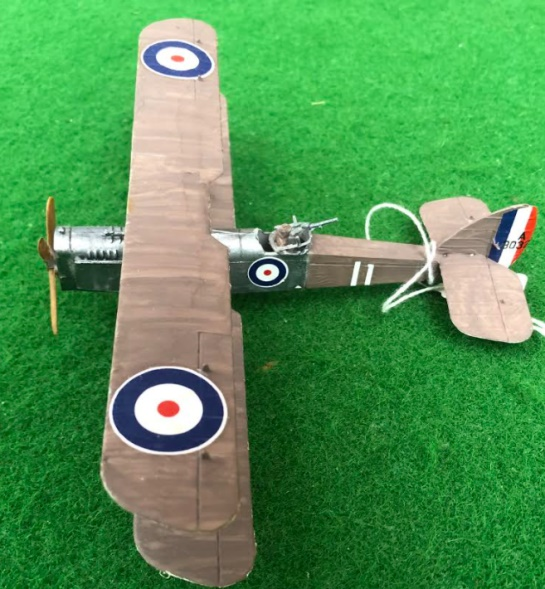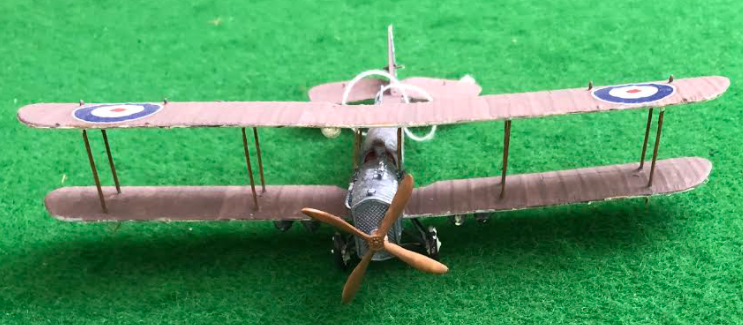Airco DH.4
The Airco DH.4 was a British two-seat biplane day bomber of the First World War. It was designed by Geoffrey de Havilland (hence “DH”) for Airco, and was the first British two-seat light day-bomber to have an effective defensive armament.
The DH.4 was developed as a light two-seat combat aircraft, intended to perform both aerial reconnaissance and day bomber missions. One of the early aims of the design was for it to be powered by the newly-developed Beardmore Halford Pullinger (BHP) engine, capable of generating up to 160 hp. During its first years of flight, it was tried with several different engines, perhaps the best of which was the 375 hp (280 kW) Rolls-Royce Eagle engine. Armament and ordnance for the aircraft consisted of one 0.303 in (7.7 mm) Vickers machine gun for the pilot and one 0.303 in (7.7 mm) Lewis gun on a Scarff ring mounting for the observer. In addition, either a pair of 230 lb (100 kg) bombs or a maximum payload of four 112 lb (51 kg) bombs could be carried.
The DH.4 performed its first flight in August 1916; less than a year later, it entered operational service in France on 6 March 1917 with No. 55 Squadron of the Royal Flying Corps (RFC). The majority of DH.4s were actually manufactured as general purpose two-seaters in the United States, the majority of which were intended to be used in service with the American expeditionary forces being deployed to fight in France.
AIRCO DH.4
Introduction: March 1917
Primary users: RFC, RAF. Royal Naval Air Service
United States Army Air Service
Number built: 6,295, of which 4,846 were built in the USA.
Crew: two
Length: 9.35 m
Wingspan: 13.21 m
Powerplant: 1 × Rolls-Royce Eagle VIII water-cooled V12 engine, 375 hp
Maximum speed: 230 km/h


